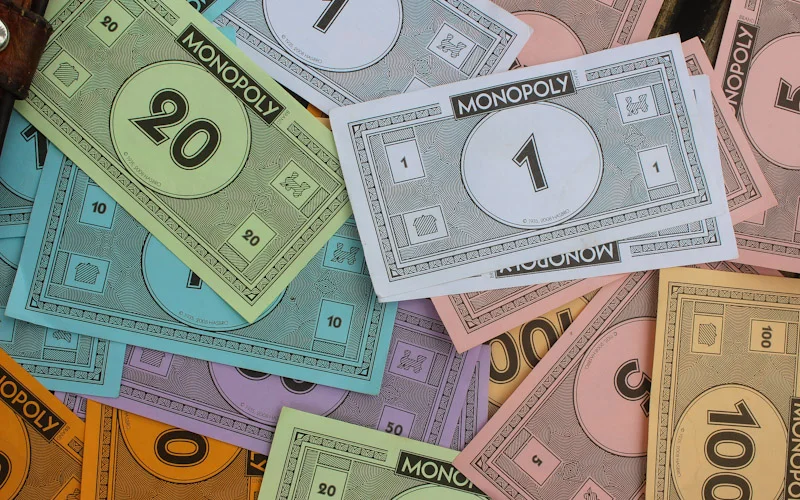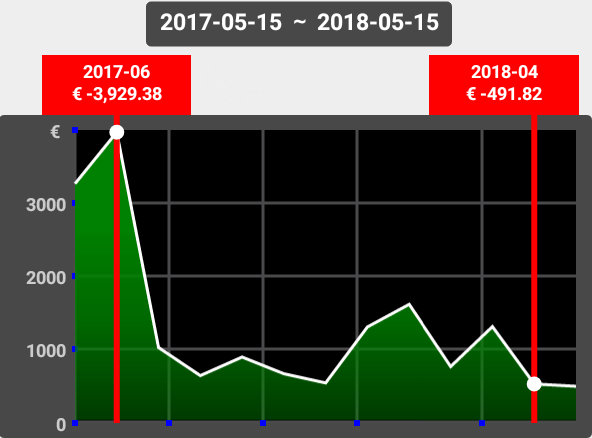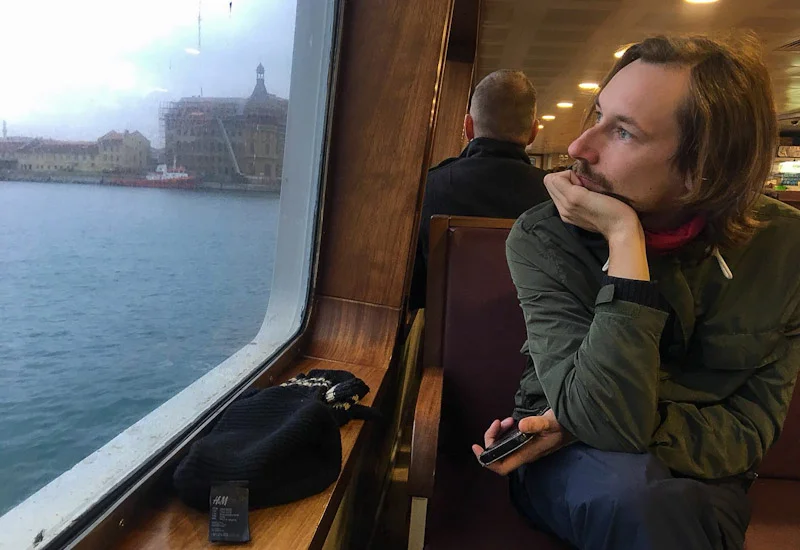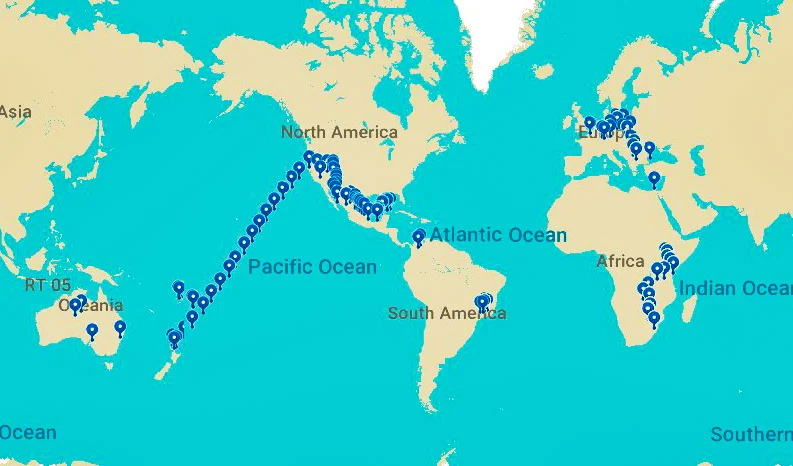How much does it cost to travel the world for one year? Here’s my travel budget for 1 year of solo travel on a budget.
Travel budgets vary a lot from person to person. To help you get a general idea about how much it costs to travel the world for a year, here’s my one year travel budget from the second year of my trip around the world.
If you just found this blog via Google, I think it’s useful that I tell a little bit about myself and my way of travel first. That way you can estimate if your one year travel budget would be higher or lower than mine.
I’m Arimo, a (still somewhat!) young solo male backpacker from Finland. Instead of hotels or even hostels, I prefer staying with locals for free with Couchsurfing. I’ve done some volunteering, but I tend to travel at a quicker pace than most long-term travellers.
Although I could be called a budget traveller, I don’t try extremely hard to minimize my spending. I use public transport instead of hitchhiking and I pay for different activities here and there. I also eat a lot outside.
During these last twelve months, I’ve travelled in Oceania, North America, South America and Europe. For a full summary of the route, check out my post “Another 365 – The Second Year of My Trip Around the World”.

This universal currency can be found all over the world.
My Travel Budget for 1 Year of Solo Travel (2018)
For the full travel budget for my 2-year trip around the world, see I Traveled Around the World in 777 Days.
I’ll start with the most important number right away. My total travel budget for 1 year of solo travel on a budget was…
16,470 euros (1372 €/month)
That’s a one year travel budget of 19,420 US$ (1618 US$/month). The sum includes all my travel related expenses from the last year – I’ve only excluded gifts, donations and some other fees that are not related to my trip around the world in any way.
If you only came hear to know my total travel budget for 1 year of solo travel, you can now close this page and move on. But if you want to learn how that sum came to be, you can keep reading.

I didn’t put much effort into illustrating this article. Here’s another photo of my pile of Monopoly money!
My One Year Travel Budget Breakdown
Here’s how my one year travel expenses divided into different categories:
- Transportation: 7720 € (47 %)
- Food: 3141 € (19 %)
- Travel Fees: 1765 € (11 %)
- Accommodation: 1471 € (9 %)
- Accessories and Technology: 1030 € (6 %)
- Entertainment: 688 € (4 %)
- Health: 148 € (1 %)
- Everything Else: 508 € (3 %)
- = Total Travel Budget of 16,470 euros
As you can see, transportation has clearly been my biggest money drain this year. It has swallowed nearly half of my total one year travel budget.
Now let’s go through all the categories in more detail.
(For those interested, I use an app called AndroMoney to track my expenses. I’ve written about the app in an old blog post called “8 Useful Android Apps for Long Term Travel (and What to Do With Them)”.)
1. Transportation 7720 € (643 €/month)
- Flights 3045 €
- Ships 2624 €
- Buses 1263 €
- Trains 285 €
- Local Transport and Day Trips 285 €
- Taxis 218 €
Traveling slowly and focusing on shorter and more popular routes would be a great way to save money. I say would be, because I didn’t do that. My one-way flight from Brazil to South Africa cost about a thousand euros, and that’s not even the biggest expense here.
I crossed the Pacific Ocean as a passenger on a cargo ship. The whole journey took me 16 days and cost roughly 2500 euros. That made the ticket the most expensive thing I’ve ever bought in my life. The fee did include a huge private cabin and all the meals, though.
2. Food: 3141 € (262 €/month)
- Restaurants and Street Food: 1760 €
- Food from Shops: 1381 €
During the first year of my RTW trip, I very rarely prepared any meals for myself. While eating in restaurants multiple times a day was remarkably cheap in Asia, I had to change my habits once I got to Australia.
3. Travel Fees 1765 € (147 €/month)
- Travel Insurance 1217 €
- Visas 401 €
- New Passport 147 €
When trips take longer than 3-4 months, the travel insurance prices rise steeply. I also had to get a new passport at the Embassy of Finland in Mexico as my old one was about to expire.
In hindsight, I could have probably saved a lot by switching from my Finnish bank to an international travel insurance company.
4. Accommodation 1471 € (123 €/month)
- Hostels 913 €
- Hotels 524 €
- Other 34 €
I spend very, very little on accommodations. Last year I stayed two thirds of my nights with different Couchsurfing hosts around the world. Out of the remaining four months, I spent half the time volunteering via Workaway.
Both of those options give you a free place to stay, so I only paid for 2 months of accommodation during the second year of my trip around the world.
5. Accessories and Technology 1030 € (86 €/month)
- SIM Cards and Mobile Data 435 €
- Technology 332 €
- Clothes 208 €
- Guide Books 34 €
- Other Accessories 21 €
Woah, how did I spend so much on internet? While SIM cards and mobile data tend to be cheap in many destinations, it seems that the costs can really add up. I also bought the cheapest tablet I could find to replace my crushed (oops!) laptop.
I could have saved more by looking for cheaper chargers, earphones, USB cables and other items. I’ve lost count on how many chargers I’ve lost, and some of the replacements I’ve bought have been clearly overpriced.
6. Entertainment 688 € (57 €/month)
- Entrance Fees 390 €
- Activities and Services 157 €
- Snacks and Drinks 93 €
- Books and Games 48 €
This year I spent much less on special activities than I did last year. Last year I did a scuba diving course, a Nepali language course, a massage course, surfing lessons, multiple guided tours… but no, nothing like that on this second year of my trip around the world.
As I started to worry more about my travel budget after the first year, I cut down on more expensive entertainment such as courses and guided tours.
7. Health 148 € (12 €/month)
- Medicine and Other Medical Supplies 56 €
- Personal Hygiene 52 €
- Medical Check 40 €
I spent very little on my health this year. I was never badly sick and the 40 € medical check was needed for my cargo ship voyage (see Transportation section above).
However, the number would be much higher if I included the vaccinations and malaria medicines I acquired before my trip. Those would make the sum closer to 500 euros. Take that into account if you use my one year travel budget to estimate your own future costs.
8. Everything Else 508 € (42 €/month)
- Carbon Offset 233 €
- CouchSurfing and Workaway Verifications 81 €
- ATM and Exchange Fees 150 €
- Laundry 25 €
- Mail 16 €
- Misc. 13 €
I pay voluntary offsets for the CO2 emissions of my flying – and I encourage others to do the same. Instead of calculating the exact emission, I usually give donations worth 10 percent of my ticket prices to atmosfair.
(UPDATE: Since then, I’ve learnt that carbon offsetting is not very effective. To help with the environment, I donate to high-impact climate initiatives suggested by Giving Green instead.)
ATM fees can get surprisingly high, so I try to draw out bigger sums at once or pay with a credit card when it’s convenient.

Yay, you made it through the long and pictureless bit! Here, have a doggo!
How Does My Travel Budget for 1 Year Compare to the Year Before?
This is not the first time I publish my 1 year travel budget. I wrote a similar article called “My Travel Budget for 12 Months of Solo Travel (2017)” about the expenses of the first year of my trip around the world.
How does my newer travel budget for 1 year of solo travel compare to the year before? Let’s take a look at the differences:
- Food: 3726 → 3141 € (-16 %)
- Transportation: 3326 → 7720 € (+132 %)
- Accommodation: 3316 → 1471 € (-56 %)
- Entertainment: 3301 → 688 € (-79 %)
- Travel Fees: 2252 → 1765 € (–22 %)
- Accessories and Technology: 1297 → 1030 € (-20 %)
- Health: 491 → 148 € (-70 %)
- Everything Else: 671 → 508 € (-24 %)
Total: 18,380 → 16,470 euros (-10 %)
Last year I spent very equal amounts on food, transportation, accommodation and entertainment. On this year’s travel budget, the divisions are very different. This year transportation took nearly half of my annual travel budget!
I’ve managed to cut down my budget on everything else, but my transportation budget more than doubled. What caused the big increase? Well, mainly a few expensive connections.
Most importantly, my cargo ship voyage across the Pacific cost me about 2500 euros. I also had more expensive flights this year than I did the year before.

My monthly travel costs for the last year. For the last ten months, I’ve lived on an average budget of less than a thousand euros a month.
And how was I able to cut down my one year travel budget in every other category except transportation?
I had already invested a lot on traveling the year before, so I didn’t need to buy a lot of new gear, medicine and other supplies. I also switched from expensive courses and tours to cheaper and mainly free activities.
However, the main reason for my shrinking budget was Couchsurfing.
I didn’t do as much Couchsurfing on the first year of my trip, but now I do it almost as often as I can. Staying with locals for free has greatly decreased my spending on accommodation. In addition, it has helped me save money on anything from food to activities and laundry fees.
Before you jump to register on the website, though, I must remind you about the spirit of Couchsurfing. You shouldn’t use Couchsurfing like a free hotel. It’s great to save money, but Couchsurfing is more about interacting and making new friends all over the world.
How to Save Money While Traveling?
Related post: 42 Most Useful Long-Term Travel Tips
I’m not going to share all my budget travel tips here, but here are a few general principles that can help you save lots of money in the long run. They are your level of comfort/luxury, destinations and travel pace.
There are lots of ways to save on your level of comfort. Hostels are cheaper than hotels, local buses cheaper than tourist buses and street food costs less than fancy restaurant meals. As a plus, the the budget options are often more interesting and memorable than the expensive ones!
Your choice of destination will also have a big impact on your travel budget. If I pay two euros for a salmon pasta in Bali and ten times as much for a similar plate in France, it’s quite obvious where it’s easier to backpack on a budget.
The pace of your travel is also very important. The slower you travel, the less you need to spend on transportation. Slow travel also gives you opportunities to volunteer, work, buy groceries and so on. These things help keep your travel budget for one year of travel relatively low.





11 comments
You’ve wrung a lot of life experience value out of every euro, Arimo!
haha, I wonder how much it cost me to not travel in the past 12 months!?
Haha, who knows! 😀 Sometimes traveling is cheaper than staying still, although it’s harder to work at the same time!
Insightful! Kiitos
Ole hyvä! 🙂
Cool post mate! I am going to keep track of everything I spend on my next trip and also do a post like this. Thanks for the inspiration!
You’re welcome! It would be interesting to see how much you actually spend. As you worked in Europe, I’m guessing your actual expenses for 15 months were more than $2000?
I actually wrote about how I survived 15 months in Europe with only $2000. You may find it interesting. I hope you don’t mind me linking http://theshoelaceexpress.com/my-one-year-in-europe-with-2000-how-i-did-it/
I have enjoyed reading your travels and info.
I travelled from Cape Town via a hired car early last year to Etosha national park and followed by going up to Johanesburg and returning via garden route, I was told it was dangerous but I found it no more dangerous than London.
End of last year I flew to Cairo and took a bus to Alexandria for about £3.00. Went to Siwa springs worth going to. Returned by train to Cairo by train for £3.00.
Flew toAbuja and went on the Kaduna and Sokota, travel gin very cheap, good train.
Back in UK travelling later in the year to Pakistan and Far East.
Thank you Majid for your comment and experiences! 🙂
Thank you for mentioning the CO2 offsets! I’ve been avoiding flying recently but there are some situations where a trip isn’t feasible without flying at least partway. You’ve helped me resolve a dilemma I was stuck on.
Sorry for replying over a year late, but you’re welcome! 🙂 I’ve noticed very few people are aware of CO2 offsets even if they wish to live in a sustainable way.